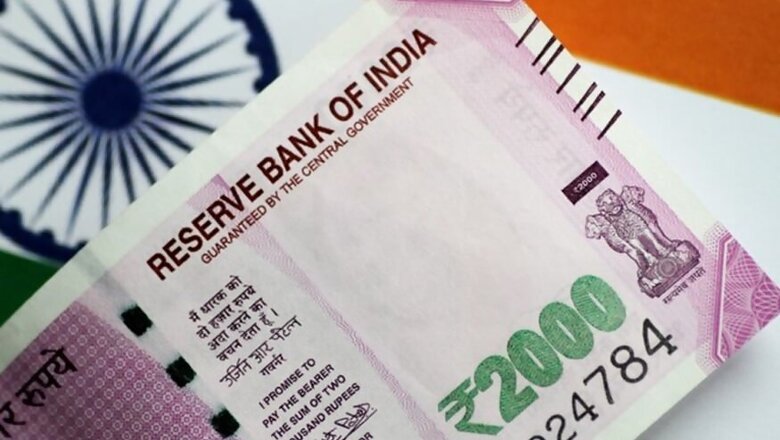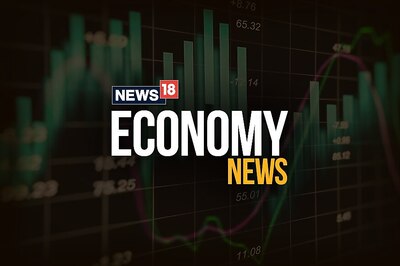RBI May Cut Lending Rates as Govt Banks on Consumers to Loosen Purse Strings to Boost Wobbly Economy

views
New Delhi: There is near unanimity among analysts and market watchers that the Reserve Bank of India (RBI) will announce a cut in lending rates in its scheduled monetary policy announcement this Friday. Of course, this does not automatically mean that your EMI burden for housing or car loan will immediately feel lighter, since transmission of the RBI cuts by banks is always with a lag and the entire cut is rarely passed on at one go. But the signal this fifth successive likely rate cut will send out is unambiguous: the government wants you to spend and is doing all it can to lift the burden of the EMIs.
Already, there has been a series of measures taken by the government to boost economic growth, the latest being a surprise large cut in the taxes corporates pay, and these are expected to revive growth in the medium to long term. Alongside this fiscal easing (the government has been announcing weekly measures to boost sector specific growth too apart from the decrease in headline corporate tax rates), the RBI has been complementing the government’s efforts by easing lending rates through the monetary policy. In the last monetary policy committee meeting, the central bank had slashed the repo rate (the rate at which it lends to banks) by a surprise 35 basis points (0.35%) to 5.4%.
Now, as the monetary policy committee meets to deliberate on the economic growth, the RBI has before it continuing economic slowdown to consider. In its last meeting, the 5% GDP growth number for April-June 2019 had still not been known (this meant growth in Q1 this fiscal had fallen to a six-year low) and the central bank had assumed a higher rate of growth for the Q1 and the first half of this fiscal.
Suvodeep Rakshit, Vice President at Kotak Institutional Equities, said the Q1 GDP growth at 5% came in when the estimate for the first six months of this fiscal was 5.8-6.6% and for the full year, it was 6.9%. The RBI has since then unequivocally said that stimulating growth is its primary concern and that it was surprised with the 5% number for Q1.
Now, not only has growth been slower than anticipated, other data coming in, too, seems disappointing. Latest government data shows growth of the core sector contracted for the first time in over four years to -0.5% in August against a positive 4.8% growth recorded in the same month last year. The core sector signifies as the main industry of the economy and in India, there are eight core sectors comprising coal, crude oil, natural gas, refinery products, fertilisers, steel, cement and electricity.
Analysts at ratings agency CARE Ratings said in a note, “The negative growth seen in August 2019 indicates there has been stagnation in government’s spending on infrastructure. Thereby meaning that the government’s effort to prop–up investment has been limited. The core sector growth for July 2019 was revised upwards from 2.1% to 2.7%. The contraction can be chiefly attributed to negative growth recorded in the segments of coal, crude oil, natural gas, cement and electricity. The improvement in production of refinery products and fertilizers compared with the previous month could have to some extent limited the contraction in overall index.”
Put simply, this means not enough coal is being used to fire power plants, not enough cement is being bought due to declining construction activity and there is an overall slowdown in infrastructure activity since July, when the decline first became apparent. The CARE analysts have further said that the contraction in case of coal to a three-year low, coupled with electricity to a six-and-a-half year low, has weighed on the overall index.
“The contraction in electricity of 2.9% to an extent can be attributed to a lower commercial demand and high base effect. Lower demand from the power sector has led to a contraction of 8.6% in coal production. Steel production moderated to a six-month low of 5%, 3.9% lower than the previous month. This growth is positive for the industry but not adequate. Government spending on railways, and to an extent on urban development, has accounted for this growth. Cement production has recorded a negative growth of 4.9% and is at a 28-month low on account of a higher base and because the full-fledged monsoon has kept production under check.”
So with muted industrial activity and slowing overall economic growth, the RBI has little option but to incentivise spending. Analysts at brokerage Edelweiss have said in a note that the central bank will likely cut rates because a) economic growth still needs monetary support as tax cuts, while a definite positive in the long run, may provide only modest support in the near term, and b) the manufacturing sector is facing deflation and it therefore becomes imperative for the RBI to cut rates aggressively to ensure that real rates don’t rise. Else debt servicing could pose a challenge. The third reason is, risk aversion in the financial system is still high and requires continued monetary support.
The Edelweiss analysts are talking of a 35–40 bps cut this Friday and another 35–40 bps in the rest of FY20. This means they are indicating a further easing of almost 75-80 bps before March next year. And Rakshit of Kotak has agreed with this rate cut range. “With inflation remaining within its comfort range, despite recent onion price increases, revisions to its growth forecast warrant a sharper-than-usual rate cut in the October policy. We pencil in a 40 bps of rate cut which should be a signal to the market that the MPC is not quite done as it front loads the remaining couple of rate cuts in the cycle. Further, with the start of the external benchmarked loans in October, a larger rate cut will help in quicker transmission of rate cuts even as the non-benchmarked loans continue to factor in the past rate cuts.”
(Author is a senior journalist. Views are personal)
















Comments
0 comment